
The Timeless Wonder of Petra
Discover the ancient city of Petra, Jordan’s archaeological gem, where history, culture, and stunning landscapes converge in a timeless desert wonderland.
Nestled in the rugged mountains of Jordan, Petra is an ancient city carved into rose-red cliffs. Known as the 'Lost City' and one of the New Seven Wonders of the World, Petra offers a journey back in time to the Nabatean civilization that thrived here over 2,000 years ago. As you enter Petra through the narrow Siq, a winding gorge flanked by towering rock walls, the first sight of Al-Khazneh, or 'The Treasury,' is breathtaking. This iconic facade, with its intricate carvings and grandiose architecture, sets the tone for the wonders that lie ahead. Beyond the Treasury, Petra unfolds as a labyrinth of temples, tombs, and ancient dwellings, each telling a story of a bygone era. Petra is not just about its historical monuments; it’s also a place of natural beauty. The pink-hued rocks change color with the shifting sun, creating a mesmerizing landscape. The hike up to the Monastery, another colossal structure, rewards you with panoramic views of the surrounding desert and mountains. In the evenings, Petra by Night offers a magical experience, with the path to the Treasury illuminated by thousands of candles, accompanied by traditional Bedouin music. Whether you are a history buff, an adventure seeker, or someone in search of unique experiences, Petra has something for everyone. Its blend of natural beauty, rich history, and cultural significance makes it a must-visit destination.
Local tips in Petra
- Wear comfortable walking shoes as Petra requires a lot of walking and hiking.
- Visit early in the morning or late afternoon to avoid the crowds and the heat.
- Hire a local guide to enrich your experience with historical insights and hidden spots.
- Bring plenty of water and sunscreen, as the desert sun can be intense.
- Don’t miss Petra by Night for a unique, candle-lit experience.
Neighbourhoods in Petra
The Timeless Wonder of Petra
Nestled in the rugged mountains of Jordan, Petra is an ancient city carved into rose-red cliffs. Known as the 'Lost City' and one of the New Seven Wonders of the World, Petra offers a journey back in time to the Nabatean civilization that thrived here over 2,000 years ago. As you enter Petra through the narrow Siq, a winding gorge flanked by towering rock walls, the first sight of Al-Khazneh, or 'The Treasury,' is breathtaking. This iconic facade, with its intricate carvings and grandiose architecture, sets the tone for the wonders that lie ahead. Beyond the Treasury, Petra unfolds as a labyrinth of temples, tombs, and ancient dwellings, each telling a story of a bygone era. Petra is not just about its historical monuments; it’s also a place of natural beauty. The pink-hued rocks change color with the shifting sun, creating a mesmerizing landscape. The hike up to the Monastery, another colossal structure, rewards you with panoramic views of the surrounding desert and mountains. In the evenings, Petra by Night offers a magical experience, with the path to the Treasury illuminated by thousands of candles, accompanied by traditional Bedouin music. Whether you are a history buff, an adventure seeker, or someone in search of unique experiences, Petra has something for everyone. Its blend of natural beauty, rich history, and cultural significance makes it a must-visit destination.
When is the best time to go to Petra?
Iconic landmarks you can’t miss
The Treasury
Discover the awe-inspiring Treasury of Petra, an architectural marvel and UNESCO World Heritage Site steeped in history and beauty.

Triclinium
Explore Little Petra, the enchanting archaeological site near Petra, showcasing remarkable Nabatean architecture and breathtaking natural beauty.

The Monastery
Explore the breathtaking Monastery in Petra, a hidden gem of Nabatean architecture and a serene escape into Jordan's rich historical landscape.

Al-Siq
Explore Al-Siq, the stunning gorge leading to Petra, where nature's beauty and ancient history intertwine in a breathtaking journey.

Petra Museum
Explore the rich history of Petra at the Petra Museum, a cultural gem in Wadi Musa that showcases the ancient Nabatean civilization.

Nabatean Theatre
Explore the grandeur of the Nabatean Theatre in Wadi Musa, a stunning archaeological site that showcases ancient architecture and rich cultural heritage.

Great Temple
Explore the breathtaking Great Temple in Petra, a monumental archaeological site that showcases the grandeur of the Nabatean civilization and their architectural ingenuity.

Qasr al-Bint
Explore the timeless beauty of Qasr al-Bint, an archaeological marvel that reveals the rich history of the Nabataean civilization in Petra.

Obelisk Tomb & Bab as-Siq Triclinium.
Unveil the ancient wonders of the Obelisk Tomb and Bab as-Siq Triclinium in Wadi Musa, where history and breathtaking landscapes converge.

Byzantine Church - Petra
Discover the Byzantine Church in Petra, an archaeological gem showcasing ancient architecture amidst stunning desert landscapes.

Royal Tombs
Explore the Royal Tombs in Wadi Musa, a stunning historical landmark showcasing the architectural mastery of the Nabateans amidst breathtaking desert landscapes.

Urn Tomb
Explore the Urn Tomb in Wadi Musa, a stunning historical landmark showcasing Nabatean architecture and rich cultural heritage in Petra, Jordan.

Djinn Blocks
Discover the mystical Djinn Blocks in Wadi Musa, a historical landmark blending ancient artistry with stunning natural landscapes.

The Treasury from above
Explore the breathtaking beauty and historical significance of The Treasury in Petra, Jordan, a must-see landmark for every traveler.

Tomb of 'Unayshu
Explore the Tomb of 'Unayshu in Wadi Musa – an ancient Nabataean burial site steeped in history and surrounded by breathtaking landscapes.

Unmissable attractions to see
Petra Visitor Center
Explore the Petra Visitor Center, your gateway to the ancient city of Petra, rich in history and breathtaking landscapes.

The Treasury
Discover the enchanting beauty of The Treasury, an ancient marvel in Petra, Jordan, showcasing exceptional Nabataean architecture and rich history.

Ad-Dayr
Explore the breathtaking Ad-Dayr Monastery in Petra, Jordan—where history meets stunning natural beauty.

Al-Siq
Explore the breathtaking Al-Siq, the majestic gorge leading to Petra, where history, culture, and natural beauty converge in a stunning journey.

Shobak Castle - Montreal
Discover the medieval marvel of Shobak Castle in Jordan, an archaeological site rich in history with stunning views and captivating architecture.

Dana Biosphere Reserve
Explore the breathtaking landscapes and rich biodiversity at Dana Biosphere Reserve, Jordan's premier national park for nature lovers and adventurers alike.

Nabatean Theatre
Discover the historical marvel of the Nabatean Theatre in Wadi Musa, an archaeological gem showcasing ancient artistry and architectural brilliance.

Petra Museum
Discover the ancient treasures of Petra at the Petra Museum in Wadi Musa, a captivating journey into the history of the Nabateans.

Great Temple
Explore the Great Temple of Petra, an extraordinary archaeological site showcasing the grandeur of the ancient Nabatean civilization amidst stunning landscapes.

Qasr al-Bint
Discover the ancient wonders of Qasr al-Bint, a historical landmark and archaeological treasure in the heart of Jordan's desert landscape.

Obelisk Tomb & Bab as-Siq Triclinium.
Explore the exquisite Obelisk Tomb & Bab as-Siq Triclinium, a stunning archaeological site in Wadi Musa, showcasing the artistic brilliance of the ancient Nabateans.

Byzantine Church Petra
Explore the Byzantine Church in Petra, a stunning archaeological site featuring exquisite mosaics and rich history in the heart of Jordan.
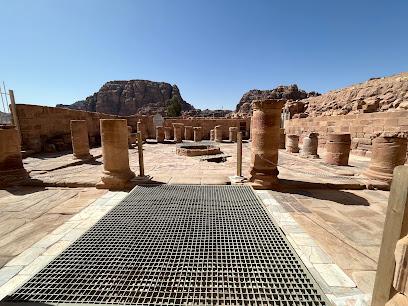
Back Door hiking route to the Monastery
Experience the stunning Back Door Hiking Route to the Monastery in Uum Sayhoun, where adventure meets breathtaking natural beauty.

Djinn Blocks
Explore the Djinn Blocks in Wadi Musa, a captivating historical landmark that reveals the ancient wonders of the Nabatean civilization amidst stunning natural landscapes.

Wadi Araba
Explore the stunning Wadi Araba, a breathtaking desert valley in Israel, known for its unique landscapes, rich history, and adventure opportunities.

Essential places to dine
Al Wadi Restaurant
Experience authentic Jordanian cuisine at Al Wadi Restaurant in Wadi Musa – where tradition meets taste in a stunning setting.

Abu Elias Restaurant
Experience authentic Jordanian cuisine at Abu Elias Restaurant in Wadi Musa - a culinary gem near Petra offering delicious dishes and warm hospitality.
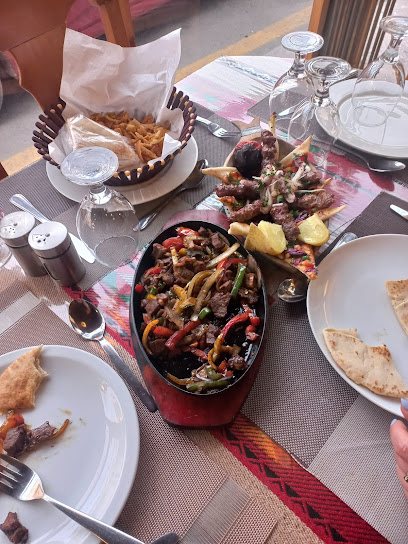
Falafel Time Restaurant
Experience the rich flavors of Jordan at Falafel Time Restaurant in Wadi Musa - a must-visit for falafel lovers!

My Mom's Recipe Restaurant
Experience authentic Jordanian cuisine at My Mom's Recipe Restaurant in Wadi Musa – where tradition meets flavor in every dish.
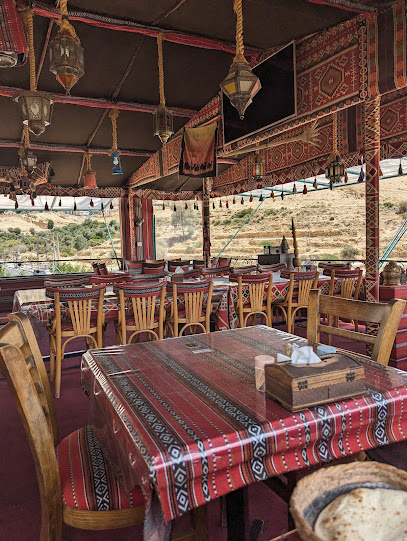
Bedouin House Restaurant
Discover authentic Jordanian cuisine at Bedouin House Restaurant in Wadi Musa - where every meal tells a story.

Reem Beladi Restaurant
Experience authentic Jordanian cuisine at Reem Beladi Restaurant in Wadi Musa – where tradition meets taste in every delightful dish.

Beit Al-Barakah restaurant
Experience authentic Jordanian cuisine in a welcoming atmosphere at Beit Al-Barakah restaurant in Wadi Musa.

Meat on fire Restaurant
Discover exquisite Arabic cuisine at Meat on Fire Restaurant in Wadi Musa - where every bite tells a story!

Alqantarah Restaurant
Experience authentic Middle Eastern cuisine at Alqantarah Restaurant in Wadi Musa – where every dish tells a story.

Zawaya restaurant
Experience authentic Jordanian cuisine at Zawaya Restaurant in Wadi Musa - a perfect blend of flavors and hospitality.

Mr. Falafel
Experience the best of Middle Eastern cuisine at Mr. Falafel in Wadi Musa - home to delicious falafels and warm hospitality.

Sajiat Al janoob
Discover authentic Jordanian flavors at Sajiat Al Janoob in Wadi Musa—where tradition meets taste.

Elan restaurant
Discover authentic Jordanian cuisine at Elan Restaurant in Wadi Musa - where flavor meets tradition amidst stunning surroundings.

Time Out
Discover exquisite flavors at Time Out Cafe & Restaurant in Wadi Musa—where local cuisine meets breathtaking views near Petra.

Al-Arabi Restaurant
Experience authentic Middle Eastern cuisine at Al-Arabi Restaurant in Wadi Musa – where flavor meets tradition at affordable prices.
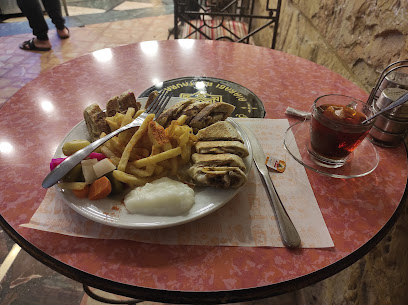
Markets, malls and hidden boutiques
Petra Visitor Center
Explore the wonders of Petra at the Visitor Center, your essential guide to the ancient city’s rich history and breathtaking landscapes.

Triclinium
Experience the ancient allure of Triclinium, a historical landmark in Little Petra, where history, culture, and stunning landscapes converge.

The Monastery
Explore The Monastery, a breathtaking historical landmark in Uum Sayhoun, where ancient architecture meets stunning natural beauty.

Mövenpick Petra
Discover unparalleled luxury and comfort at Mövenpick Petra, your gateway to the ancient wonders of Petra, Jordan.

Petra Museum
Discover the rich history of the Nabataean civilization at the Petra Museum, a must-visit destination for all culture enthusiasts exploring Petra.

Petra Plaza Hotel
Discover the luxury and convenience of Petra Plaza Hotel, your gateway to the ancient city of Petra in Wadi Musa.

Petra Night Restaurant
Experience authentic Jordanian cuisine at Petra Night Restaurant, a must-visit dining spot in Wadi Musa with stunning views of Petra.

Petra View Shop
Explore Petra View Shop for authentic Jordanian souvenirs, from handcrafted jewelry to unique pottery, capturing the essence of Petra's rich culture.

World Nectar Makeup
Explore World Nectar Makeup, a vibrant cosmetics store offering personalized beauty experiences and quality products in an inviting atmosphere.

Petra Kitchen
Experience the rich culinary heritage of Jordan at Petra Kitchen with immersive cooking classes that bring local flavors to life.

Petra Basket Store - سلة البتراء ستور
Explore Petra's charm and enjoy familiar American grocery delights at Petra Basket Store in Wadi Musa.

Al-Janoub sweets
Experience mouthwatering pastries and traditional Middle Eastern sweets at Al-Janoub Sweets in Wadi Musa, the perfect treat after exploring Petra.

K & Zee Toys and Stationery
Discover K & Zee Toys and Stationery, where creativity meets adventure with a vast selection of toys, games, and unique stationery items.

Highlight stores-أسواق الضوء الساطع
Discover unique shopping experiences at Highlight Stores in Petra, featuring antiques, perfumes, and more in a vibrant atmosphere.

Ramez Supermarket
Discover local flavors and essentials at Ramez Supermarket, your go-to grocery stop in Uum Sayhoun, Jordan.

Essential bars & hidden hideouts
My Mom's Recipe Restaurant
Savor authentic Jordanian flavors at My Mom's Recipe Restaurant, a culinary gem in Wadi Musa offering traditional home-cooked meals.

Time Out
Experience the flavors of Jordan at Time Out Cafe in Wadi Musa, where delicious food meets warm hospitality in a charming atmosphere.

The Cave Bar
Discover the enchanting Cave Bar in Wadi Musa, where unique ambiance meets refreshing drinks amidst stunning rock formations.

Rainbow Restaurant
Experience the vibrant flavors of Jordan at Rainbow Restaurant in Wadi Musa, where local cuisine meets fast food favorites.

Palm Court Restaurant & Cafe
Experience the flavors of Jordan at Palm Court Restaurant & Cafe in Wadi Musa, a culinary gem near the historic Petra site.
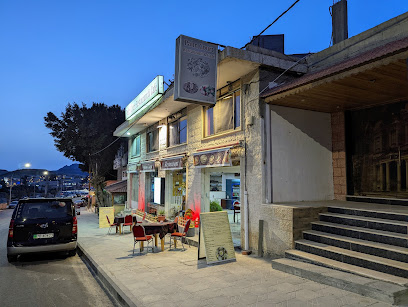
BAHIA Rooftop & Restaurant
Discover the flavors of Jordan at BAHIA Rooftop & Restaurant, where stunning views meet exquisite cuisine in Wadi Musa.
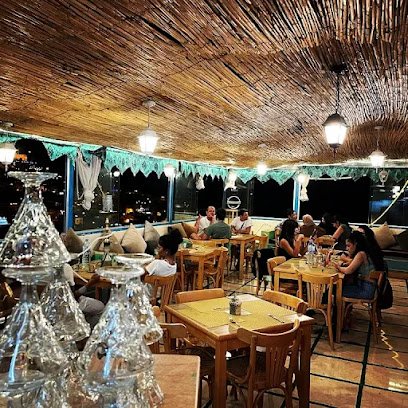
The Basin Restaurant
Experience the essence of Petra at The Basin Restaurant, where local flavors meet stunning views in a charming atmosphere.

Petra Night Restaurant
Experience authentic Jordanian cuisine under the stars at Petra Night Restaurant in Wadi Musa, a culinary delight near the ancient Petra ruins.
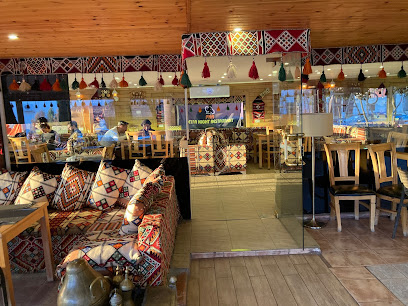
Red Cave Restaurant
Experience the rich flavors of Jordan at Red Cave Restaurant in Wadi Musa, where traditional meets modern in a cozy dining atmosphere.

Kilkenny Bar
Kilkenny Bar in Wadi Musa - A perfect retreat for travelers seeking relaxation, great drinks, and a vibrant atmosphere.

La plazza pizza
Discover La Plazza Pizza, where delicious varieties of pizza meet the vibrant atmosphere of Wadi Musa, perfect for travelers exploring Petra.

Nabatean Restaurant
Discover the rich flavors of Jordanian cuisine at Nabatean Restaurant in Petra Park, a must-visit for culinary enthusiasts and travelers alike.

The Aloe Vera Restaurant
Experience the flavors of Jordan at The Aloe Vera Restaurant in Wadi Musa, a perfect blend of local cuisine and warm hospitality.

White Bird cafe
Discover the charm of White Bird Cafe in Petra, where relaxation meets local culture in a delightful hookah experience.

Al Maqa'ad Bar
Discover Al Maqa'ad Bar in Wadi Musa, where refreshing drinks and authentic Jordanian cuisine meet stunning views of Petra.

Travel experiences inspired by this city
Explore more travel diariesLocal Phrases
-
- Helloمرحبا
[marhaba] - Goodbyeوداعا
[wadaea] - Yesنعم
[naam] - Noلا
[laa] - Please/You're welcomeمن فضلك
[min fadlik] - Thank youشكرا
[shukran] - Excuse me/Sorryعذرا
[aadra] - How are you?كيف حالك؟
[kaif halak?] - Fine. And you?بخير. وأنت؟
[bukheir. want?] - Do you speak English?هل تتحدث الإنجليزية؟
[hal tatahadath al'injlizia?] - I don't understandأنا لا أفهم
[ana la afham]
- Helloمرحبا
-
- I'd like to see the menu, pleaseأريد أن أرى القائمة، من فضلك
[urid an ara alqaimah, min fadlik] - I don't eat meatأنا لا آكل اللحم
[ana la akl allahm] - Cheers!صحتين!
[sahatein] - I would like to pay, pleaseأريد أن أدفع، من فضلك
[urid an adfae, min fadlik]
- I'd like to see the menu, pleaseأريد أن أرى القائمة، من فضلك
-
- Help!النجدة!
[alnajdah!] - Go away!انصرف!
[ansharif!] - Call the Police!اتصل بالشرطة!
[atassil bialshurtah!] - Call a doctor!اتصل بطبيب!
[atassil bitabib!] - I'm lostضاعت الطريق
[daeat altryq] - I'm illأنا مريض
[ana mareed]
- Help!النجدة!
-
- I'd like to buy...أريد أن أشتري...
[urid an ashtari...] - I'm just lookingأنا فقط أتفرج
[ana faqat atfarg] - How much is it?كم سعره؟
[kam saeruh?] - That's too expensiveهذا غالي جدا
[hatha ghali jiddan] - Can you lower the price?هل يمكنك تخفيض السعر؟
[hal yumkinuk takhfid alsaeer?]
- I'd like to buy...أريد أن أشتري...
-
- What time is it?كم الساعة؟
[kam alsaeah?] - It's one o'clockالواحدة
[alwahidah] - Half past (10)عشر ونصف
[ashar wansf] - Morningصباح
[sabah] - Afternoonمساء
[masa] - Eveningمساء
[masa] - Yesterdayالبارحة
[albarihah] - Todayاليوم
[alyawm] - Tomorrowغدا
[ghadan] - 1واحد
[wahid] - 2اثنين
[ithnayn] - 3ثلاثة
[thalathah] - 4أربعة
[arbahah] - 5خمسة
[khamsah] - 6ستة
[sittah] - 7سبعة
[sabahah] - 8ثمانية
[thamaniah] - 9تسعة
[tisah] - 10عشرة
[asharah]
- What time is it?كم الساعة؟
-
- Where's a/the...?أين...
[ayn...] - What's the address?ما هو العنوان؟
[ma hu al'anaan?] - Can you show me (on the map)?هل يمكنك أن تريني (على الخريطة)؟
[hal yumkinuk an tureeni (ala alkharitah)?] - When's the next (bus)?متى الحافلة القادمة؟
[mata alhafilah alqadimah?] - A ticket (to ....)تذكرة (إلى ...)
[tazkirah (ila ...)]
- Where's a/the...?أين...
History of Petra
-
Petra, originally known as Raqmu, was established as the capital of the Nabataean Kingdom around the 4th century BCE. The Nabataeans were a nomadic Arab tribe who settled in the area and created a prosperous trading empire. Petra's strategic location allowed it to control the trade routes that linked Arabia, Egypt, and the Mediterranean.
-
The Nabataeans were master engineers and architects, creating an advanced water management system that included dams, cisterns, and water conduits. This allowed them to thrive in the arid desert environment. The city is renowned for its rock-cut architecture and innovative construction techniques, which are epitomized in the iconic Treasury (Al-Khazneh) and the Monastery (Ad-Deir).
-
In 106 CE, Petra was absorbed into the Roman Empire as part of the province of Arabia Petraea. The Romans introduced their architectural styles to the city, which resulted in a unique blend of Nabataean and Roman influences. Significant structures from this period include the Colonnaded Street and the Roman Theatre, which could seat up to 8,500 spectators.
-
After the Roman annexation, Petra gradually declined in importance due to shifting trade routes and a series of earthquakes. By the 7th century CE, Petra was largely abandoned. The city remained lost to the Western world until it was rediscovered in 1812 by Swiss explorer Johann Ludwig Burckhardt, who was guided to the site by local Bedouins.
-
Petra was designated a UNESCO World Heritage Site in 1985, recognizing its cultural and historical significance. It has since become one of the most visited archaeological sites in the world, attracting tourists, historians, and archaeologists alike. Preservation efforts continue to protect and study this ancient marvel, ensuring that future generations can appreciate Petra's legacy.
Petra Essentials
-
Petra is located in the southern part of Jordan, approximately 240 kilometers from the capital city, Amman. The nearest airport is Queen Alia International Airport in Amman. From Amman, you can take a direct bus operated by JETT, which takes around 3-4 hours. Alternatively, you can hire a private taxi or rent a car. There are also guided tours that include transportation from Amman or Aqaba, another nearby city with an international airport.
-
Once in Petra, most of the site is explored on foot. For those who need assistance, there are options such as horse-drawn carriages, camels, and donkeys. Local taxis and car rentals are available for getting around the Wadi Musa town, which is adjacent to Petra. Public buses and minibusses (service taxis) also operate between Wadi Musa and other cities like Amman and Aqaba.
-
The official currency in Jordan is the Jordanian Dinar (JOD). Credit cards are widely accepted in hotels, restaurants, and larger shops in Wadi Musa. However, it is advisable to carry some cash for smaller establishments and market purchases. ATMs are available in Wadi Musa, but it is good practice to withdraw sufficient cash in larger cities before arriving.
-
Petra and Wadi Musa are generally safe for tourists. However, like any tourist destination, it’s important to stay vigilant. Avoid walking alone at night in deserted areas and be cautious with your belongings in crowded places. There are no specific high-crime areas targeting tourists, but it is always best to stay aware of your surroundings.
-
In case of an emergency, dial 911 for immediate assistance. There is a police station and medical facilities in Wadi Musa. It is recommended to have travel insurance that covers medical emergencies. For minor health issues, there are pharmacies in town where you can purchase over-the-counter medications.
-
Fashion: Do dress modestly; wear comfortable walking shoes. Avoid revealing clothing, especially when visiting religious sites. Religion: Do respect local customs and traditions. Always cover your head when entering mosques. Public Transport: Do be respectful; give up your seat to elderly passengers. Don’t eat or drink on public transport. Greetings: Do greet people with a handshake; men should wait for women to extend their hand first. Eating & Drinking: Do try local delicacies and accept food offerings graciously. Don’t refuse hospitality, as it is considered impolite.
-
To experience Petra like a local, visit the local markets in Wadi Musa where you can buy traditional Jordanian goods. Engage with locals; they are often friendly and willing to share stories about the area's history and culture. Don’t miss the Petra by Night experience, where the Siq and Treasury are illuminated by thousands of candles. For a unique viewpoint, hike up to the Monastery or Al-Khubtha trail for panoramic views of Petra.
Nearby Cities to Petra
-
Things To Do in Ma'an
-
Things To Do in Dana
-
Things To Do in Tafilah
-
Things To Do in Wadi Rum
-
Things To Do in Eilat
-
Things To Do in Aqaba
-
Things To Do in Kerak
-
Things To Do in Masada
-
Things To Do in Beersheba
-
Things To Do in Ein Gedi
-
Things To Do in Dead Sea
-
Things To Do in Bethlehem
-
Things To Do in Madaba
-
Things To Do in Jerusalem
-
Things To Do in Modi'in

















